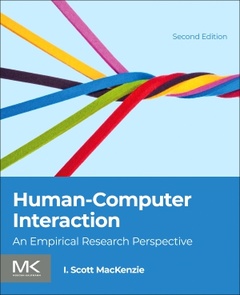Description
Human-Computer Interaction (2nd Ed.)
An Empirical Research Perspective
Author: MacKenzie I. Scott
Language: English
Subject for Human-Computer Interaction:
Keywords
<; p>; human factor; computer technology; human actions; HCI research; hypothesis testing<; /p>
466 p. · 19x23.4 cm · Paperback
Description
/li>Contents
/li>Biography
/li>Comment
/li>
Human-Computer Interaction: An Empirical Research Perspective is the definitive guide to empirical research in HCI. The book begins with foundational topics, including historical context, the human factor, interaction elements, and the fundamentals of science and research. From there, the book progresses to the methods for conducting an experiment to evaluate a new computer interface or interaction technique. There are detailed discussions and how-to analyses on models of interaction, focusing on descriptive models and predictive models. Writing and publishing a research paper is explored with helpful tips for success. Throughout the book, readers will find hands-on exercises, checklists, and real-world examples. This is a must-have, comprehensive guide to empirical and experimental research in HCI ? an essential addition to your HCI library.
1. Historical Context 2. The Human Factor 3. Interaction Elements 4. Scientific Foundations 5. Designing HCI Experiments 6. Hypothesis Testing 7. Modeling Interaction 8. Writing and Publishing a Research Paper
performance measurement and modeling, interaction devices and techniques, text entry, mobile computing, accessible computing, touch-based interaction, eye tracking, and experimental methodology.
- Provides a master, A-to-Z guide in a concise, hands-on reference
- Presents the practical and theoretical ins-and-outs of user studies
- Includes exercises, takeaway points, and case studies throughout
- Updated to incorporate developments in HCI, including Human performance outliers, Interaction elements: pointing and selecting; text input; gesture input




